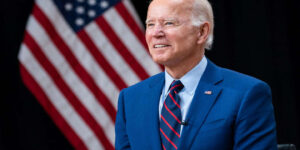Is the Church Losing Its Voice in a Media-Driven World?
My team at Cooke Pictures gets hired when a church, ministry or nonprofit organization is losing its voice. Perhaps you’ve experienced a similar situation: Despite doing great work in the community—like building homeless shelters, drug treatment centers or food banks—your ministry still lives hand to mouth. Or, as a pastor who has had a genuine calling, you’ve built a great team, invested your life in the vision with powerful preaching, teaching or ministry, but the spark never happens; growth never takes off. Or it just suddenly stops.
I see it happen all too often: media ministries that just can’t seem to grow beyond a local broadcast; churches that hit an attendance plateau; benevolent outreaches that can’t seem to break through a certain level of fundraising. In most cases, these efforts are led by qualified, sincere men and women, and almost all have a strong vision for excellence. They spend money on capital campaigns, media equipment, church-growth consultants, marketing, TV or radio time, advertising, social media campaigns and more, but they just seem trapped and unable to grow beyond a certain point.
Telling Conflicting Stories
A number of years ago, I was invited to the monthly creative and marketing meeting for one of the world’s largest media ministries. For some time, the leaders of the ministry had noticed that their TV viewers—although historically a large audience—had stopped growing. Once they began investigating, they discovered it was pretty much the same story throughout the entire ministry. Income had hit a plateau, resource sales were flat, TV response was slowing, and financial partnership with donors was almost nonexistent.
When I was introduced to the ministry leader—a prominent religious figure—his first response was, “Well, I don’t know why you’re here. There’s nothing wrong with this organization.”
The room got a bit icy, so I stood up and walked around. In a respectful tone, I replied, “I think you’re absolutely correct. Your program is well-produced, and your ministry has always been very popular. But the truth is, you’ve suddenly hit a wall that no one seems to be able to explain.”
I continued, “Before I came to this meeting, I spent time studying the different expressions of your ministry, and the first thing I noticed was that everything you do looks different from everything else.”
I pulled out pictures from the ministry website, the title card from the opening of the TV program, examples of the website design, a print ad, a brochure and his latest book and pointed out that they all looked like they came from five or six different organizations. There was no common look or theme to anything. Essentially, they were telling six different (and sometimes conflicting) stories about the ministry.
The Noticeable Power of Unifying Your Story
When you look at the advertising from a major brand like Nike, Starbucks or Apple, everything they do—from bus stop ads to television to magazines—has a common look and style. From a hundred yards away, you can recognize a McDonald’s restaurant in the distance—whether you’re in Beijing, Mumbai, Cleveland or Moscow. These companies all carry the theme of the business across all media, which in turn strengthens the power of the company in the minds of the consumer.
I got his attention.
“So how do we fix that?” he asked.
“Tell me who you are,” I replied.
“We’re a teaching ministry that’s called to preach and teach the message of Jesus Christ.”
“Be more specific,” I said. “What you’re saying is no different from what a million other churches and ministries out there are doing.”
“OK, we’re called to television.”
“Still no good.” I pushed him a bit. “The question isn’t, ‘What do you do?’ or, ‘How do you do it?’ The real question here is, ‘Who are you?’”
I stopped for a second and said, “Let me put it this way: What do people think of when they think of you and, in turn, your ministry?”
He had no answer. He’d never thought of it before.
Define and Refine Your Overarching Story
Whatever good the abundance of ministry outlets brings to the world, it also brings confusion and clutter for people who are trying to make sense of it all. The ministry leader I was meeting with began to understand.
“So how do audiences relate to people and ministries they see out there right now?” he asked.
I encouraged him to consider ministries and how they’ve identified and branded themselves during the last 20 years. The most successful may teach on a wide variety of issues, but in most cases, they each have an overarching theme to their life and ministry.
Until he retired from pastoral ministry a few years ago, my own pastor was Jack Hayford at The Church On The Way, in Van Nuys, Calif. As a pastor, Jack has been a brilliant teacher and spent decades preaching and teaching on an incredibly wide range of subjects in response to God’s calling. But despite that range and depth, I believe that Jack was and is motivated and driven by “worship.” He is endlessly fascinated with the subject, both as a pastor and as a musician. As a result, he has taught today’s church volumes on the issue. Many would say he’s the single greatest voice in the Christian community on the importance of godly worship in the church today. Bottom line, if you cut Jack, he bleeds worship.
I rattled off a list of other names from the world of media ministry, both past and present, to illustrate my point. Whether or not you agree with their theology, to most people these leaders are known for a specific topic:
- Billy Graham is the salvation guy.
- Rick Warren is the purpose guy.
- John Maxwell is the leadership guy.
- James Dobson is the family guy.
- Joel Osteen is the inspirational guy.
- Dave Ramsey is the financial guy.
- Joyce Meyer is about enjoying everyday life.
Granted, you may consider this a crude way to look at it, but for millions of people, that’s exactly how they view these ministry personalities.
In a world of choices, defining your ministry gives your audience handles they can easily grasp and allows them to have a quick understanding of who you and your church are—and where your focus lies.
Why is this necessary? Think of your brain as acting like a filter to help you sort through the growing flood of information surrounding us every day. In this environment, we need easy ways to help us get to the real information we need to make decisions about life. It’s about the story that surrounds who you are—a story that creates focus for your ministry. In short, it’s about your ministry “brand.”
I ask you the same thing I asked that ministry leader in our creative meeting: What do people think of when they think of you and your church?
A successful church, ministry or nonprofit organization happens at the intersection of a number of issues, not the least of which is calling, vision, ability, commitment, resources, exposure, location and education. But, what happens when all those things fall into place and the spark still doesn’t happen—when a church with all the right ingredients still struggles; when a gifted pastor never reaches a larger audience; when a wonderful ministry can’t seem to break through a particular barrier?
It could also happen to a church or ministry of any size that has been successful in the past, but like the pastor in my creative meeting, suddenly and with no explanation, the ministry stops getting results.
In a media-driven culture—when even the best idea doesn’t have a clear and compelling story surrounding it—no amount of qualifications, resources, advertising or leadership can overcome the deficit.
The media today is a digital cacophony of voices and images. To stand out in that ocean of choices takes more than excellent sermons, quality resources, professional programs and good intentions. It’s not about manipulation, but about helping people clearly understand who you are and how you can impact their lives.
Connecting With a Culture That Changes at Light Speed
In today’s world, people establish a gut-level connection with a person based on their own values and perceptions long before they buy into the person’s message.
Think about it. When you meet someone for the first time, you’ve sized him up long before he opens his mouth. When a consumer makes the initial connection—hear me when I say “initial”—it’s not about content; it’s about thebrand. In that first moment, the values, story and sense of authenticity surrounding a leader or church are far more important than anything else.
A media-driven culture changes the equation for ministry. Today, we operate our churches, ministries or nonprofit organizations in a 21st-century technological context. In our current digital culture, where a typical American deals with as many as 5,000 media messages a day, it doesn’t matter how great your message is if it can’t cut through the clutter and ultimately impact people’s lives.
There’s no question that the Christian faith has been most effective when it has acted as salt and light. Operating on the margins of society, we’ve made a great contribution to the culture. And as I’ve said many times, it doesn’t take a scholar to note the remarkable and unparalleled contribution Christianity has made to the West throughout history.
But in what most call a postmodern and post-Christian culture, we’re discovering that any power we thought we had during the last generation has created a backlash. Even though they acted with the best of intentions, Christian leaders of a generation ago who made Christianity a political force are now viewed by the culture as parodies and are often referred to in condescending and humorous terms.
I’m not here to argue their accomplishments, but I am here to offer a better way to impact the culture for the future.
If your story and brand are connecting to the audience and giving their lives meaning, then it will continue to sustain its impact and your ministry will grow.
The truth is, change happens, and change is coming whether we like it or not; whether or not we bemoan modern advertising and marketing; whether we criticize those who are pioneering new ideas or turn our backs on new technology. Jesus criticized the Pharisees for not recognizing the signs of the times, and yet 2,000 years later, many leaders are still just as blind.
Creating an effective brand story doesn’t mean being reactive to the culture; it means being responsive to the culture—recognizing the change and being there with the story that has transformed so many generations before us.
Don’t give your congregation, your donors or your audience what you think they want.
Give them what they never dreamed possible.
Excerpted and adapted with permission from Unique: Telling Your Story in the Age of Brands and Social Media by Phil Cooke (Regal Publishers, 2012).




























































